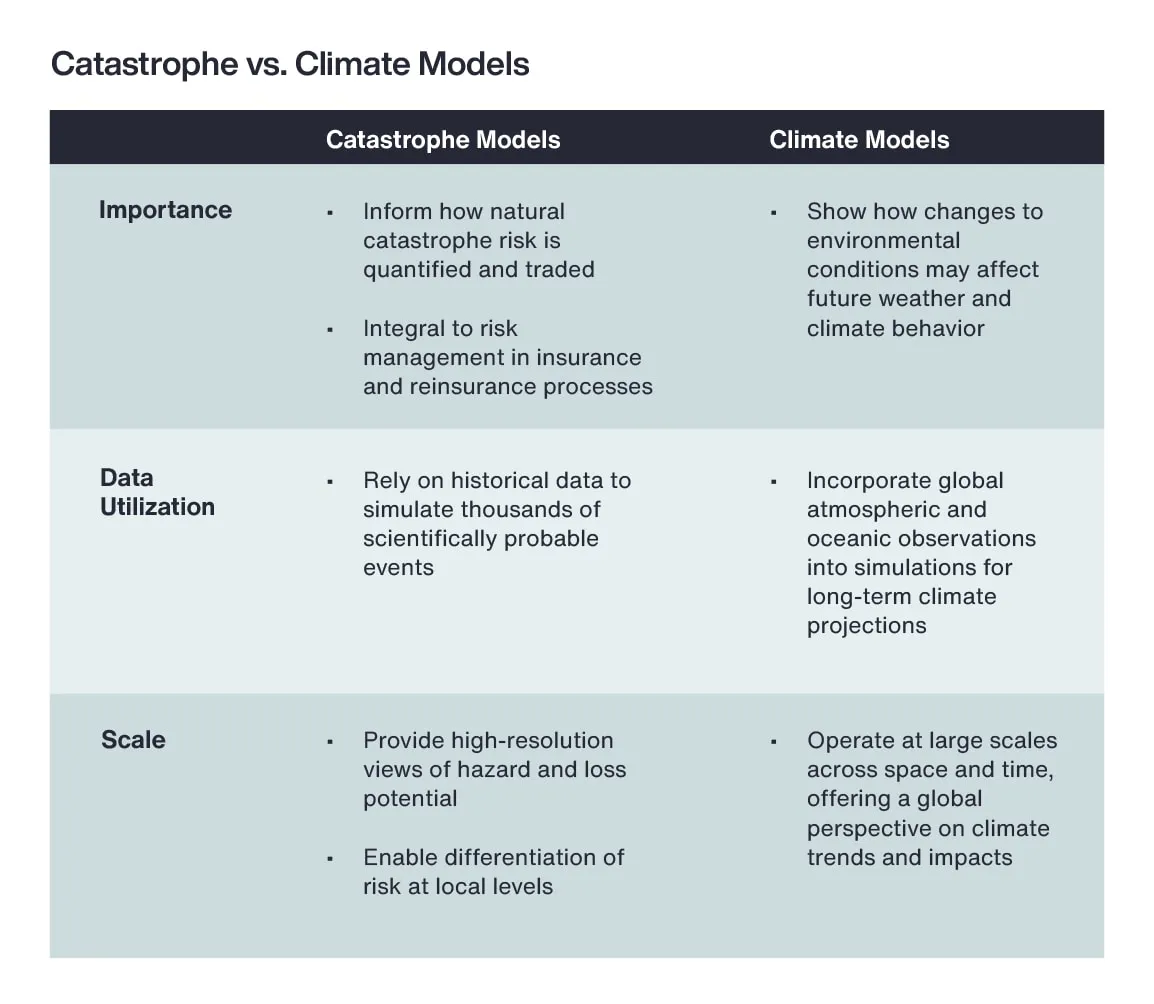
In 2023, natural catastrophes (nat cats) impacted communities worldwide. Events, such as earthquakes, severe convective storms and catastrophic floods, disrupted project timelines and caused major financial losses for the construction industry. Compounded by record-breaking heatwaves, the urgency for risk management strategies focused on mitigating the effects of a changing climate has never been greater.
In response, construction companies are looking for insights about the climate’s effect on their projects. They are considering the tactical use of risk models to identify and quantify nat cat perils that could affect projects, impact design and construction decisions, as well as inform risk transfer strategies.
Catastrophe models use historical data to simulate thousands of scientifically probable events and provide a view of loss potential. Climate models, on the other hand, rely on extremely large scales across space and time, bringing global atmospheric and oceanic observations into simulations to show how changing environmental conditions may influence future weather or climate events.

Integrating advanced catastrophe models and climate models into risk management frameworks will better equip construction businesses to anticipate and address the threats posed by natural disasters and climate change. Climate and catastrophe models specifically support the construction industry in the following areas:
Leveraging innovative modeling approaches plays a vital role in risk transfer strategies, allowing construction companies to quantify and mitigate potential losses.
From an insurance perspective, climate-driven risk modeling has surged in importance, becoming a critical tool in evaluating project risk perception within the market. It is important that all project stakeholders understand the risks involved and assess their options for insuring, mitigating or transferring these risks to enhance project resilience. Weather events hold a prime spot in insurers' risk assessments, guiding decisions on project viability and coverage terms.
Climate modeling also aids brokers in gauging risk capacity needs and optimizing outcomes, facilitating early collaboration with businesses during the design phase for proactive climate risk management and informed decision-making. This ensures resilient project execution from the start.
As construction projects face complex risks, early implementation of climate models and ensuring professional guidance on their use will be key.
Here are three effective climate modeling strategies that risk managers in construction can implement:
1. Seek expert advisory services. Collaborate with advisors offering innovative modeling techniques tailored to construction-specific challenges.
2. Tailor modeling solutions to project phases. Employ tools that match modeling solutions with different project stages, ensuring comprehensive risk assessment. Gauge exposure in real-time, thereby enabling proactive risk management.
3. Embrace holistic modeling solutions. Select comprehensive models that provide both current and future perspectives on natural catastrophe and climate impacts. Opt for holistic climate risk programs to navigate the uncertainties of climate change, facilitating informed risk management decisions.